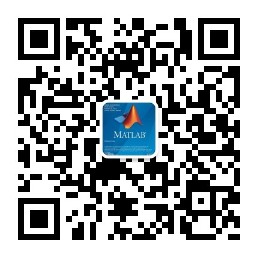博文
[转载]【无人机】【2017.10】基于视觉的无人机导航系统
||
本文为西班牙马德里卡洛斯三世大学(作者:Abdulla H. Al-Kaff)的博士论文,共225页。
本文的主要目的是为无人机提供一个鲁棒的导航系统,使无人机能够自主、实时地完成复杂的任务。所提出的算法主要是基于单目摄像机捕捉到的视觉信息来解决室外和室内环境下的导航问题。此外,本文还介绍了利用视觉传感器作为主要数据源,或在提供有用信息方面与其他传感器互补的优点,以提高传感的准确性和鲁棒性。
本文主要研究了基于计算机视觉技术的无人机姿态估计问题:(1)姿态估计,为无人机6D姿态估计提供了一种解决方案。该算法基于SIFT检测器和FREAK描述子的结合,保持了特征点匹配的性能,减少了计算时间。在此基础上,基于世界到帧和帧到帧同构图的分解,解决了姿态估计问题。(二)障碍物探测和防撞,无人机能够感知和探测位于其路径上的前方障碍物。该检测算法通过分析检测到的特征点的大小变化,结合连续帧中检测到的特征点周围凸包的膨胀率,模拟人类对接近障碍物的检测行为。然后,通过比较障碍物的面积比和无人机的位置,确定检测到的障碍物是否会引起碰撞。最后,该算法提取出障碍物周围的无碰撞区域,并结合跟踪的航路点进行避障机动。(三)导航制导,根据环境和所处的障碍物生成航路点以确定飞行路径,在此基础上提出了一种有效跟踪航迹段并顺利执行飞行机动的策略。(四)视觉伺服控制,根据获得的视觉信息提供不同的控制方案(模糊逻辑控制(FLC)和PID);以实现飞行的稳定性以及正确的机动;避免可能的碰撞并跟踪航路点。所有的算法都在室内和室外的实际飞行中得到了验证,同时考虑了视觉条件,如光照和纹理。所得到的结果已被其他系统所验证,如VICON运动捕捉系统、DGPS中的位姿估计算法。此外,本文还将所提出的算法与国内外已有的一些研究成果进行了比较,结果表明所提出的算法在精度和鲁棒性方面都有所提高。最后,本文得出结论:视觉传感器具有重量轻、功耗低、信息可靠等优点,被认为是提高无人机自主性的有力工具。
The main objective of this dissertation isto provide Unmanned Aerial Vehicles (UAVs) with a robust navigation system; inorder to allow the UAVs to perform complex tasks autonomously and in real-time.The proposed algorithms deal with solving the navigation problem for outdoor aswell as indoor environments, mainly based on visual information that iscaptured by monocular cameras. In addition, this dissertation presents theadvantages of using the visual sensors as the main source of data, orcomplementing other sensors in providing useful information; in order toimprove the accuracy and the robustness of the sensing purposes. Thedissertation mainly covers several research topics based on computer visiontechniques: (I) Pose Estimation, to provide a solution for estimating the 6Dpose of the UAV. This algorithm is based on the combination of SIFT detectorand FREAK descriptor; which maintains the performance of the feature pointsmatching and decreases the computational time. Thereafter, the pose estimationproblem is solved based on the decomposition of the world-to-frame andframe-to-frame homographies. (II) Obstacle Detection and Collision Avoidance,in which, the UAV is able to sense and detect the frontal obstacles that aresituated in its path. The detection algorithm mimics the human behaviors fordetecting the approaching obstacles; by analyzing the size changes of thedetected feature points, combined with the expansion ratios of the convex hullconstructed around the detected feature points from consecutive frames. Then,by comparing the area ratio of the obstacle and the position of the UAV, themethod decides if the detected obstacle may cause a collision. Finally, thealgorithm extracts the collision-free zones around the obstacle, and combiningwith the tracked waypoints, the UAV performs the avoidance maneuver. (III)Navigation Guidance, which generates the waypoints to determine the flight pathbased on environment and the situated obstacles. Then provide a strategy tofollow the path segments and in an efficient way and perform the flightmaneuver smoothly. (IV) Visual Servoing, to offer different control solutions (FuzzyLogic Control (FLC) and PID), based on the obtained visual information; inorder to achieve the flight stability as well as to perform the correctmaneuver; to avoid the possible collisions and track the waypoints. All theproposed algorithms have been verified with real flights in both indoor andoutdoor environments, taking into consideration the visual conditions; such asillumination and textures. The obtained results have been validated againstother systems; such as VICON motion capture system, DGPS in the case of poseestimate algorithm. In addition, the proposed algorithms have been comparedwith several previous works in the state of the art, and are results proves theimprovement in the accuracy and the robustness of the proposed algorithms.Finally, this dissertation concludes that the visual sensors have theadvantages of lightweight and low consumption and provide reliable information,which is considered as a powerful tool in the navigation systems to increasethe autonomy of the UAVs for real-world applications.
1. 引言
2. 最新研究进展
3. 基于单目视觉的位姿估计
4. 基于单目视觉的障碍物检测
5. 用于无人机的视觉伺服控制
6. 结论与未来工作展望
附录A 四旋翼无人机模型
附录B 相机模型与校正
更多精彩文章请关注公众号:
https://blog.sciencenet.cn/blog-69686-1225858.html
上一篇:[转载]【电信学】【2018.03】大规模多用户MIMO检测算法与架构
下一篇:[转载]【信息技术】【2006.12】医学图像配准及其在ATLAS分割中的应用